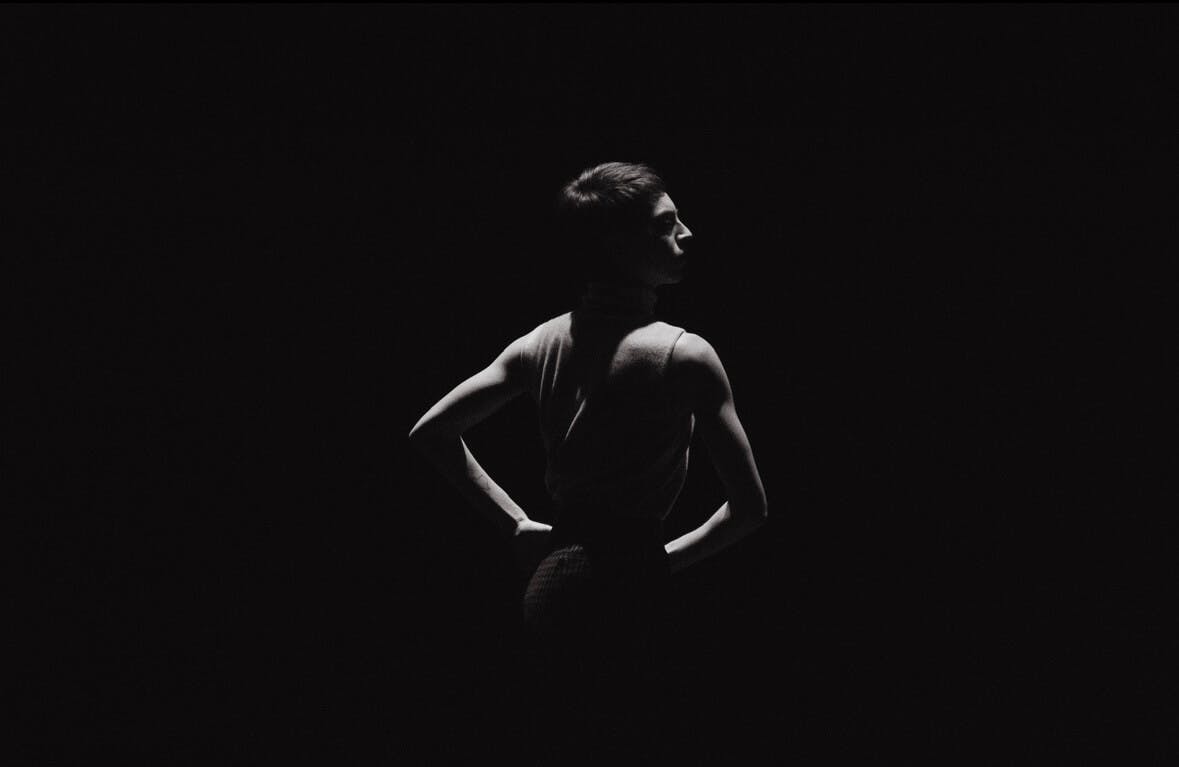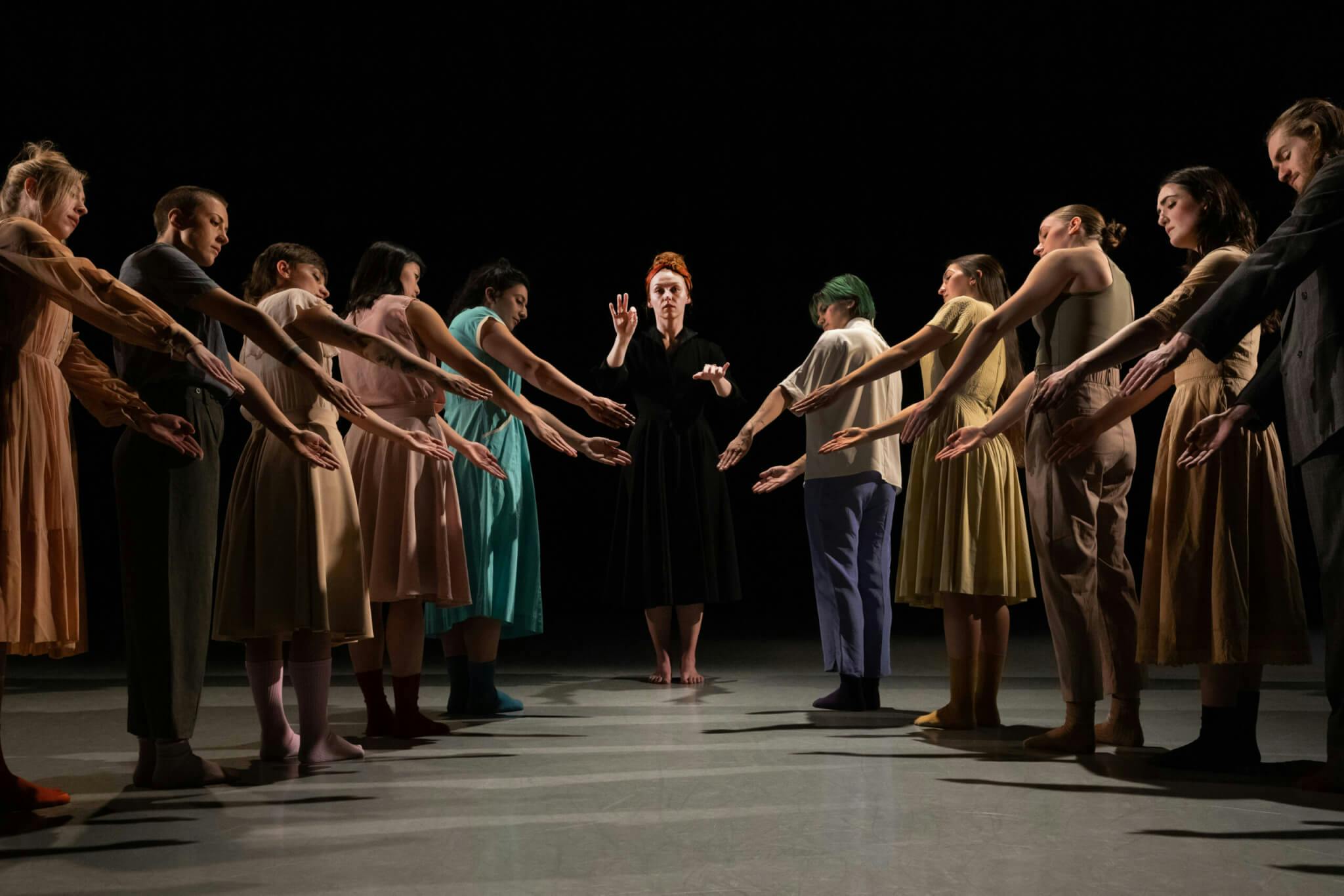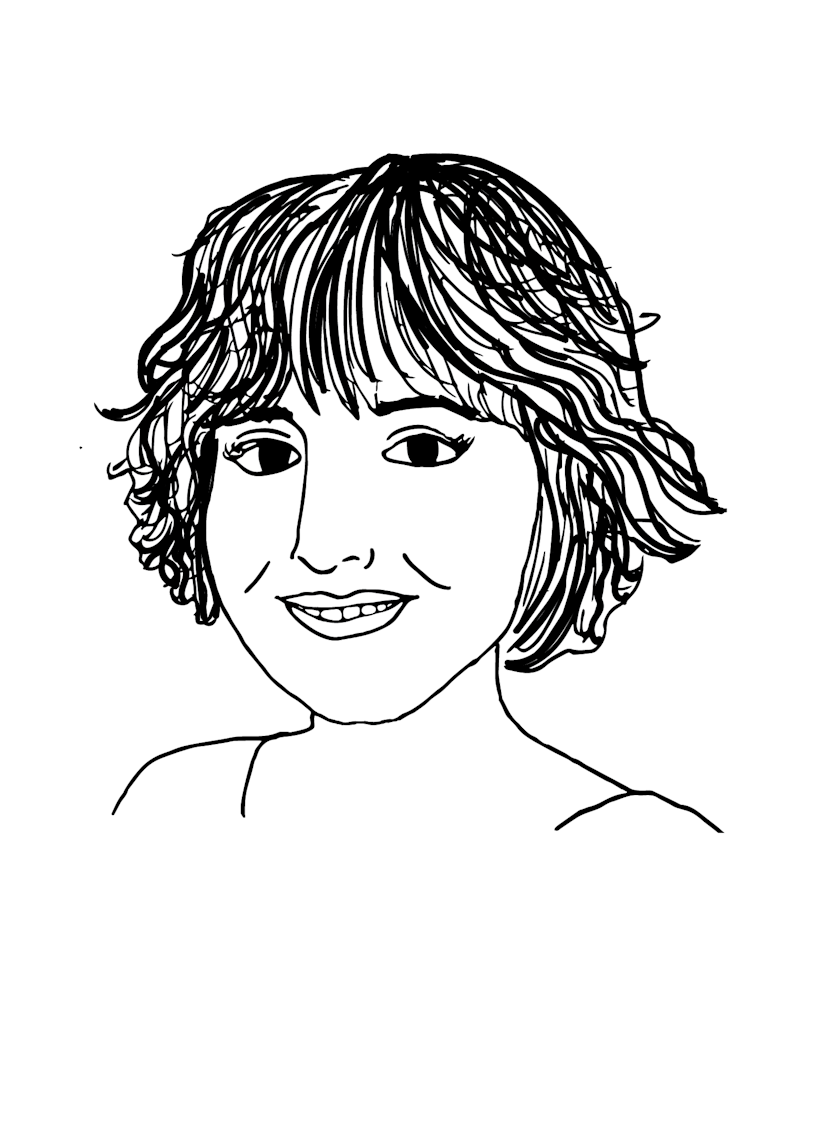There was a moment in early 2022 when choreographer Jessi Stegall was taking the subway from Harlem to Bushwick and saw her next piece flash before her eyes, sudden and bright and complete. It was her birthday, and it arrived like a gift.
“I was on Spotify and my Discover Weekly started playing one of Chopin’s Nocturnes, but it was weird,” Stegall tells me over Zoom from her new Chicago apartment. Having lived and worked in Boston for nearly a decade, she’s now splitting her time between the two windy cities, maintaining her close ties to local groups and spaces like Boston Center for the Arts (BCA), the Harvard Dance Center, and the Partnering Lab at Northeastern University. “I knew this piece very well, but I had never experienced it like that before.”
Instead of a tinkling piano, or the rarer but still recognizable violin, this iteration was keening and eerie, a warbling buzz somewhere between a stringed instrument and a synth. Which, given what it was and who was playing it, is a fairly accurate description. Stegall was listening to Clara Rockmore play the theremin, a “space music” instrument created by Russian physicist Lev Sergeyevich Termen (later known as Léon Theremin) in 1920. Termen had been trying to measure the density of gas using radio waves and accidentally constructed the world’s first electronic instrument instead. A flat rectangular box on a stand with two metal antennae on either side—one solidly vertical and the other horizontally looped—it’s controlled by a player’s hyper-precise hand movements in the air above the machine. Only someone with perfect pitch and dexterous hands can master the theremin; when watching Rockmore play, it appears as though she’s maneuvering invisible marionettes through particularly demanding acrobatics. With wrists twitching and fingers teasing, her eyes stare up and away as if she can perceive the magnetic fields she’s conducting.
In Rockmore (then Reisenberg), Termen found the perfect partner, someone with the discipline and audacity to bridge the old with the very new. She was a classically trained concert violinist and had been well on her way to becoming one of the world’s best before her career was derailed by arm weakness at the age of seventeen, an affliction that may have been brought on by childhood malnutrition. When Termen met her, she was devastated by the loss of her ability, and had recently settled in the US with the rest of her Jewish-Lituanian family after fleeing the Russian Revolution. He befriended, courted (unsuccessfully), and trained Rockmore in the theremin soon after, and she went on to be considered the greatest player of all time, paving the way for other women to make their names in electronic music. Much more than a muse or a practitioner, she was an equal partner in Termen’s work, her skill and dedication pushing him to further refine the instrument and demonstrating to a skeptical public its ethereal, albeit a bit creepy, capabilities.
While she didn’t know it on the train, Rockmore would take on a similar role in Stegall’s own practice. Clara Rockmore’s Lost Theremin Album, and—in ways that appeared destined—the musician’s biography offered the structure needed to solidify her trainbound fantasizing.
“The more I learned about Clara’s story, the more I realized just how much her life overlapped with what I had already envisioned,” she says. Through the encouragement of Monkeyhouse’s founder and artistic director karen Krolak, Stegall embarked on the creation of three of the eventual sixteen total vignettes for aMaSSiT, the Dance Complex’s Make It/Share It/Show It choreography lab, in June 2022. “When I conceived of The Theremin Vignettes on the train, I thought I would attempt it ten years down the line,” she says. “But karen pushed me to attempt even just a small step toward what she called ‘my biggest dream,’ and it ended up getting a really good response.”
aMaSSiT gave Stegall the confidence to devote herself to completing The Theremin Vignettes; she applied for and received the Boston Dance Alliance and BCA’s Boston Dancemakers Residency in late 2022. The residency provided the time, space, and resources to transform her concept into a full evening-length piece. It also provided clarity regarding her work’s purpose. Through extensive research—including close contact with Rockmore’s family—what began as a response to an underappreciated and rather odd instrument turned into an ode to a life. Paying tribute became a vehicle through which Stegall’s work came to make sense to her. With and through and because of dedication, she had found her vocation.
“It was through this project that I really came to discover my calling: I only want to work in ode,” she said. “I want to pay homage to something bigger than me. It might be through dance right now, but it doesn’t have to be; it could be anything.”
Last May, I saw The Theremin Vignettes performed in the BCA’s Black Box Theater during the residency’s four-night run. On March 15, Global Arts Live will premiere it at the ICA. Last year, the set was spare and the props nearly nonexistent (with the exception of some effectively employed rose petals). Still, I was struck by the enormity of the undertaking. With eleven dancers, Stegall manages to tell a life in an hour, not only major milestones—though those are evident throughout—but also the depth and breadth of feeling that attends the business of living. We see Rockmore determined, besotted, despairing, and triumphant. Though not identified as such in accompanying materials, certain dancers seem to operate as pure emotion, careening about in giddy panic or snapping at the middle in exhausted ragdoll slumps.
In The Theremin Vignettes, Stegall’s choreography reflects the dichotomy of the instrument’s sound; it is both tender and tortured, lithely organic and herky-jerky, full of fluid trips and sharp angles. Punctuated by chest slaps and gasps that sound ripped from bodies as if sucker punched, her style reflects her lifelong affection for the absurd, which was nurtured through texts such as Charles Mee’s play bobrauschenbergamerica and performances by Mats Ek and James Thierrée. Concurrently, it displays her obsession for small, cherished moments: in the vignettes with larger groups, there are always hidden moments of individuality among the similar sweeping gestures. She had discovered early on that a strong piece could be composed of opposing forces, having performed the lead role in a rendition of Aristophanes’s Lysistrata—set during Britain’s ’60s punk movement—at Dallas’s prestigious Booker T. Washington performing arts high school. Moreover, she appreciates that the push and pull offered by such tension is what most adequately reflects the wrenching, sublime, and sometimes silly moments that make up a life.
About halfway through The Theremin Vignettes, a young Clara Rockmore, played by Haley Andrews, curls herself up on the floor as if in tremendous pain. Having just stripped off and carefully arranged her long white gloves before her, she presses her forehead against the cold bare ground. One vignette has just ended, and in the suspended silence between dances, Andrews slowly arcs up one arm until it is stiffly perpendicular to the floor, palm flexed wide toward the audience. When the first bell-like note of Ravel’s Kaddish from Deux Mélodies Hébraïques sounds, her hand spasms into a fist. Rockmore has just learned she’ll never play the violin again.
Stegall recognizes the sacrifice and fortitude that comes with self reinvention. Having moved to Boston to pursue a BFA in theater and performance at Emerson, she gave up the program—and her single-minded pursuit of acting—after a year. These were the early years of the Trump administration, and she felt driven to pursue work that would allow her to be of greater service to others, so she enrolled in Lesley University’s expressive art therapies program and maxed out her course load to complete the degree in three years. Still, she felt disillusioned by the unwavering, simplistic positivity that saturated her studies, which she found nearly as reductive as the straightforward cut-throat competition fostered at Emerson. By the time she had finished a stint working as an emotional impairment paraprofessional for the Boston Public Schools system, she had become thoroughly disenchanted with the prevailing narratives surrounding art, wellness, and education.
“So much of what I saw in each of those contexts was so damaging,” said Stegall. “The art therapy literature I had studied during my undergrad at Lesley espouses that artmaking is inherently good for you all of the time. As an artist, I really struggled with that, because I had felt a lot of pain in making art before in ways that I wouldn’t say was inherently healing—that was actually harmful, and I wanted to explore that duality further.”
She began working with her then-partner and current collaborator, the choreographer and philosopher Dr. Ilya Vidrin, engaging in her early love of film by documenting dance performances and research at Jacob’s Pillow and the Harvard Dance Center. The opportunity to apply to Harvard’s Bioethics program arrived at the same time Stegall decided to take up dance seriously, and so Stegall found herself immersed in two equally demanding disciplines right as the world went into lockdown, cramming moral philosophy by day and practicing Forsythe improvisation technologies in her living room in the evenings. To fund these dual passions, she worked at Harvard’s Learning Lab, exploring innovative methods of teaching and learning. She found that, rather than pulling her in disparate directions, each endeavor informed the other, illuminating new trajectories into artmaking.
“The idea that you have to start dancing at five to dance at all is just bullshit,” said Stegall. “As a dancer, my unorthodox path can sometimes be a weakness; there are milestones I’ve just never crossed. But as a choreographer it’s a real strength. I’m totally uninhibited by these ‘limits’ or preconceived ideas about what ballet is, what modern is, what dance is, what theater is. It’s not that I’m not interested in the canon—I’m just obsessed with breaking it.”
Derailing assumptions, paying tribute, and embracing the messy marriage of opposites is how Stegall plans to continue with her practice, what she calls her “medium-free mission of ode-making.”
“I’m fascinated by this space where healing and harm coexist. Wherever this vulnerable, raw place is that artmaking happens—where healing happens—is also where harm lives.” It’s a sentiment echoed by Rockmore herself during the archival video that opens The Theremin Vignettes. Projected against softly fluttering white sheets, the virtuosa is confident and glamorous, her hair bound up in a scarf, her body stock straight and perfectly balanced across the two antennae. She is performing The Swan by Camille Saint-Saëns, her bird wrists twisting and shuddering in the air above the instrument. A bit later in the performance, she explains how it all comes together. “When the hand is down, you hear nothing,” she says. “You have to play the rests as well as the notes.”
Jessi Stegall’s The Theremin Vignettes will be performed at 8 pm on March 15 at the ICA. Tickets are available here.



